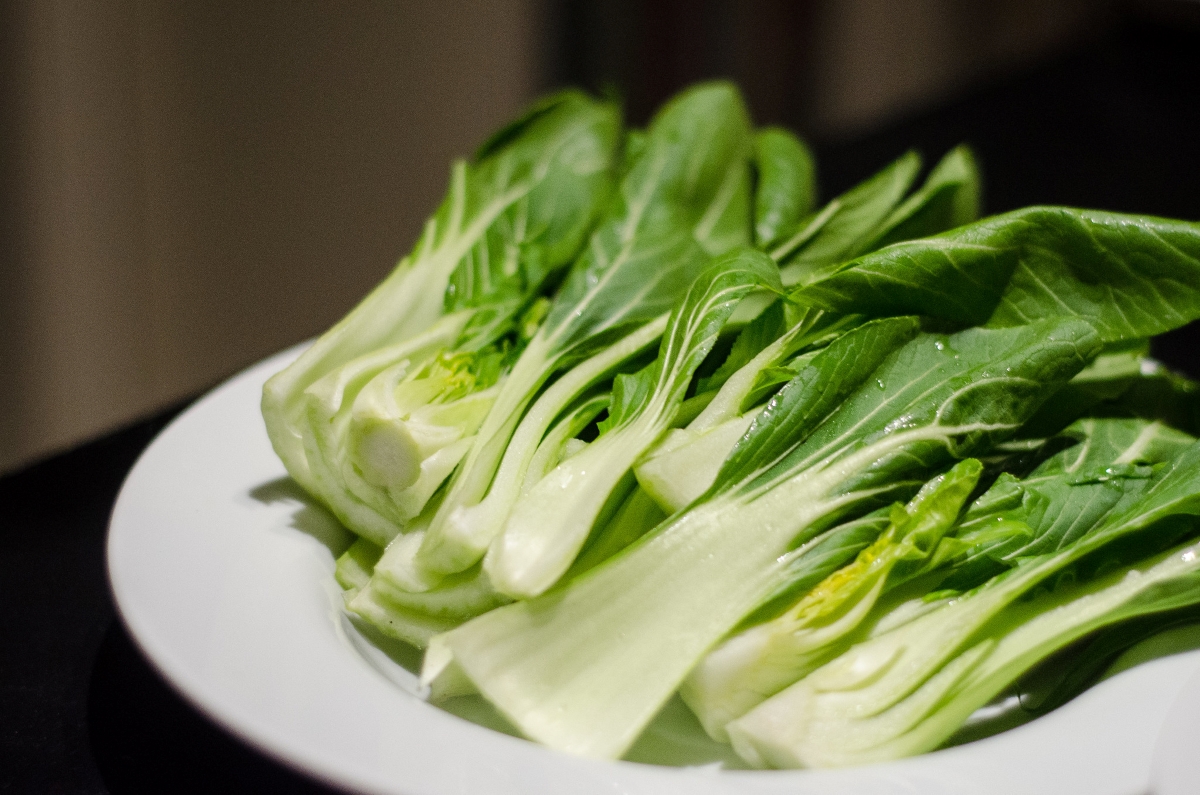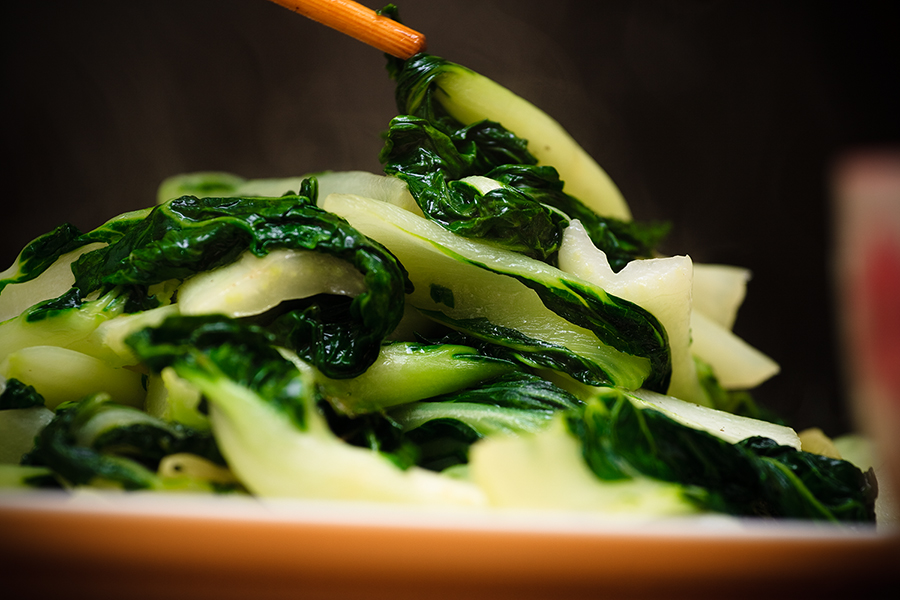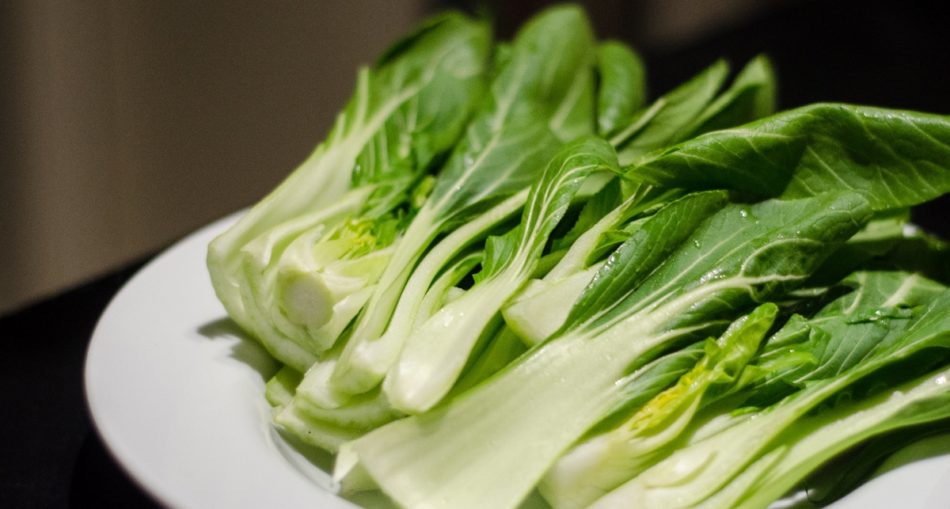Green, leafy vegetables give off a fresh aroma that is excellent to make a healthy meal. These vegetables can be cooked in a delicious and healthy way which would contribute to prolonging your lifespan. Some common leafy vegetables found and eaten in Guyana are: calaloo, pak choi and eddo leaf.
Pak choi is also called Chinese cabbage which can be referred to two groups of Chinese leaf vegetables often used in Chinese cuisine: the Pekinensis Group (napa cabbage) and the Chinensis Group (bok choy).

Pak Choi – Photo by: Erik Forsberg (https://www.flickr.com/photos/hepp/16627298728)
Origin
Pak choi was mainly grown in the Yangtze River Delta region, but was later made popular but naturalist Li Shizhen of the Ming Dynasty who drew attention to its medicinal value. The type of Pak Choi that was grown in the 14th century was introduced north where its harvest was soon bigger than in the south. The harvest was exported south to the Grand Canal, Hangzhou and even to Guangdong.
The vegetable became one of the main components in Northeastern Chinese cuisine where it was used to make suan cai. Korea created a dish called kimchi with Bok Choy (Pak Choi) and soon was a common vegetable in markets across the globe.
Description of Pak Choi
Pak Choi is a leafy vegetable closely resembling lettuce. Its long, dark green leaves are shaped oval shaped-like spoons which are attached to long white stalks. The stalks end in a short fat, bulblike stem which is white in colour. The stalks are crispy and shoots are relatively sweet. The plant has shallow roots and are able to grow very fast.
Health Benefits of Pak Choi
- Protects Against Cancer – Folate in Pak Choi helps in the production and repairing of DNA which in turn may reduce the risk of cancer cells forming. Vitamin C, Vitamin E, and Beta-carotene also found in the vegetable help to protect cell damage from free radicals.
- Maintains Bone Health – Pak Choi contains a wealth of nutrients which helps to maintain and build the strength and structure of our bones. Some of these include calcium, iron, magnesium, phosphorous, zinc, and Vitamin K.
- Maintains Heart Health – Folate and Vitamin B-6 helps to prevent the accumulation of homocysteine., too much of which can lead to heart problems. In addition, Potassium and Vitamin C help to promote a healthy heart.
- Helps with Inflammation – Pak Choi contains Choline, a nutrient which helps the cells to maintain their shapes, reduce inflammation and abosob fat. It also helps with the movement of muscles, sleep, learning and memory.
- Improve Immune System – Selenium in this vegetable stimulates the production of T-cells. which kills bacteria and viruses in our bodies.
Ways To Eat Pak Choi
In Guyana, pak choi is eaten in a variety of ways, it is steamed and eaten with chicken or shrimp along with rice, it can be used as a side dish in fried rice and chowmein and it can be sautéed with teriyaki sauce.
Pak Choi With Teriyaki Sauce
Ingredients:
- 4 bundles of pak choi
- 3 tomatoes (diced)
- 1/2 yellow onion (diced)
- 4 cloves garlic (finely chopped)
- 1/4 cup of teriyaki sauce
- 1 tsp salt
- 1/4 tsp black pepper
- 2 tbsp olive oil
Method:
- Cut the head from pak choi bundles. Separate leaves and wash individually to remove sand and mud.
- Chop into small pieces and set aside.
- Add oil to a sauté pan on medium heat.
- When hot, add onions, garlic and tomatoes.
- Add a pinch of salt and pepper.
- Cook until tomatoes are soft and onions are brown.
- Add chopped pak choi. Toss together, then add teriyaki sauce and remaining salt and pepper.
- Mix together and cook for about 5 minutes, or until whites of the pak choi stems are a bit tender.
- Remove from the heat and enjoy as it is or with your favourite starch (rice or roti).

Pak Choi – Photo By Acceptable at English Wikipedia, CC BY-SA 3.0, https://commons.wikimedia.org/w/index.php?curid=25331871
About Pak Choi
Pak Choi is one of Guyana’s most favourite leafy greens. It is easy to see why because it is packed with numerous health benefits like, improve bone and heart health and immunity. Some studies even claim it even helps to maintain blood sugar levels in patients with Type 2 diabetes. The best way to cook Pak Choi is by steaming it as the vegetables retain most of its nutrients this way. It makes for a great side dish when paired with some Guyanese Chowmein.
Article References
- https://en.wikipedia.org/wiki/Chinese_cabbage
- https://www.medicalnewstoday.com/articles/280948#benefits
- https://eresources.nlb.gov.sg/infopedia/articles/SIP_944_2005-01-19.html
- https://www.tarladalal.com/glossary-pak-choi-250i
Last Updated: 2020-07-21







